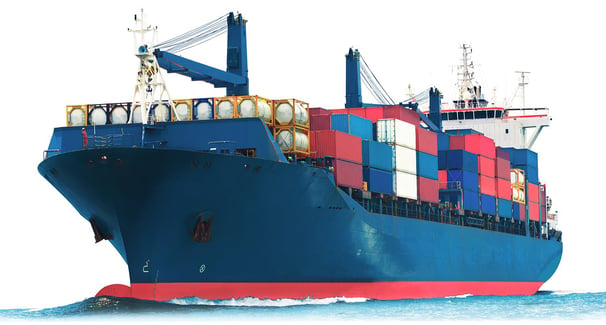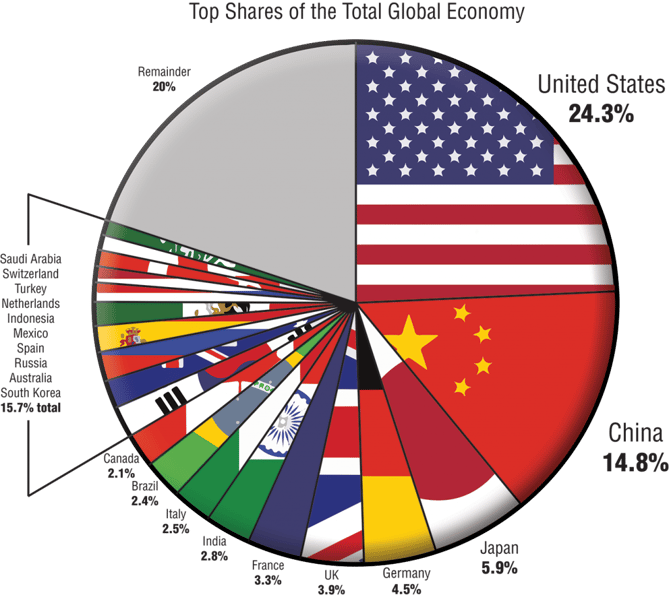Are You Tariff-ied?

Written by Hans Dittmar
08/29/2018 by Hans Dittmar
Are You Tariff-ied of what the future holds for the global economy?
$6 billion here, $20 billion there. The continued tariff threats flying back and forth are disconcerting for the global economy, and businesses – especially international ones – are no fan of uncertainty.
Some of the items currently in the cross hairs seem to make little sense till you dig in a bit. For example, in addition to orange juice and Harley Davidson motorcycles, bourbon has been hit with a 25% tariff in retaliation for the tariffs the U.S. imposed on steel and aluminum imports. In this case, the E.U. was looking to make a statement just as much political as economic, since Bourbon is a crucially important industry in Senate majority leader Mitch McConnell’s state of Kentucky, while Florida, a major producer of American oranges, is a crucial swing state during elections.
Many countries around the globe are talking about or implementing a variety of tariffs, but the largest current issues revolve around the talk of tariffs between the two behemoths, the United States and China. These two economies alone represent around 40% of the total global economy.
The numbers globally
You’ve likely heard that there are quite a few countries that are talking about tariffs as well as other forms of trade barriers. Some smaller countries are joining the fray more as a statement of protest than having an actual impact, since they understand that their participation will not necessarily have a sizable detrimental effect on the much larger economies.
This chart shows the relative size of the largest world economies; clearly it is significant that the United States, China and parts of Europe are the economies involved in the current larger tariff tussle.
The US-China numbers specifically
China is currently the United States’ largest goods trading partner with $578.2 billion in total goods traded in 2016. Goods exports totaled $115.6 billion; goods imports totaled $462.6 billion. The U.S. goods trade deficit with China was $347.0 billion in 2016. The U.S. goods trade deficit with China was down 5.5% ($20.2 billion) compared to 2015.
According to the U.S. Department of Commerce, U.S. exports of goods and services to China supported an estimated 911,000 jobs in 2015 (latest data available) (601,000 supported by goods exports and 309,000 supported by services exports).
So what does it mean?
As mentioned, business hates uncertainty. Many larger manufacturers make plans for their strategies many years in advance. Moving where a product is manufactured is a long-term play for most companies – especially for OEMs involved in capital equipment that requires complex BOM management, certifications, or legal approvals. This lengthy timeline holds true whether an OEM is choosing to transfer manufacturing to an existing facility, open a new facility or outsource the manufacturing to a supplier. All of the program management requirements also increase in complexity and risk.
When you mix these long timelines with the uncertainty of the current tariff threats, you introduce significantly more risk that cannot be easily mitigated, if at all. This often causes companies to simply delay these large commitments until there is more certainty, which in turns slows growth. We’ve seen this in several high-profile case, and there are most certainly hundreds of companies in the same ‘wait and see’ scenario. This can be detrimental to those businesses and their respective market share.
With a WOFE (Wholly Owned Foreign Entity) in Shanghai, China, GMI is uniquely positioned to help OEMs make the critical decision on whether China-based manufacturing makes sense. This has always been a seemingly simple question at first glance, but in truth is challenging and the assessment is consistently contaminated with both obvious and subtle risks. The complexity has now increased exponentially. Manufacturers must consider tariffs in addition to uncertainty within the EU economy, including the UK’s departure from the EU, the general risk of global mayhem and many other countries looking for more stringent borders.
So… what can you do?
There are a few options for reacting to the current situation.
- Stay current on events.
Make sure you and your team are able to gather information as it becomes available. Consider a collaborative tool to keep this information in a central location. Stay engaged in ongoing updates from multiple, trustworthy sources.
- Know your products.
Know your product codes and where your product content comes from. It's critical that you know which raw materials and product codes are being targeted. Outside of entire commodities (soy beans, pork, Bourbon, etc), these are generally placed into specific buckets based on harmonized codes. At a higher level, understand where your sub-assemblies or finished products are being made as well. GMI manufactures products simultaneously in United States and China for our global OEMs, and we're helping them with the updated logistics in case they want to change the mix to be more USA and less China or vice versa. You may also want to consider alternate codes that may apply but are affected differently.
- Communicate.
As the adage goes, "communication is king". Keep your suppliers, internal staff and - most importantly - your customers up to date on what you know and the possible effects when they are imminent. Develop plans for reacting to new developments and let your customers know that you are on top of it. Remember that a tariff on a raw material effects costing through to the final product.
- Consider ways to reduce or eliminate risks.
While it may not be time to make major business transitions, it is time to consider options. As the United States recently came to an informal (yet to be written into law as of this writing) agreement with Mexico, companies that are manufacturing there are breathing a collective sigh of [tentative] relief. The same is not true for those doing business with Canada and certainly not for those manufacturing assemblies or components in China. The fact is, even the tariffs that are official may not hold together for long, as it appears that they are at least in part a negotiating tool. There is little doubt, however, that there will ultimately be some level of tariffs on some number of trading partners. Consider a manufacturing partner that has multiple facilities that are in regions you currently manufacture in or are considering. Make this relevant to the region of your customer base.
At GMI, the team is doing what it can to follow these tips. Since we have a global sourcing activity we are able to track component issues better than localized manufacturers and have visibility into significant costs fluctuations. Recently we have also explored sourcing certain components from North America that are currently sourced via our China facility. While we haven't yet transitioned any major components, we feel better having knowledge. Just in case.
Ask Patrick or Kyle - trusted members of the GMI team - about saving money on your outsourcing needs today.
 |
Patrick Froh Business Development Manager patrick.froh@gmisolutions.com (414) 418-4838 |
 |
Kyle Doyle Business Development Manager kyle.doyle@gmisolutions.com (414) 242-6667 |






